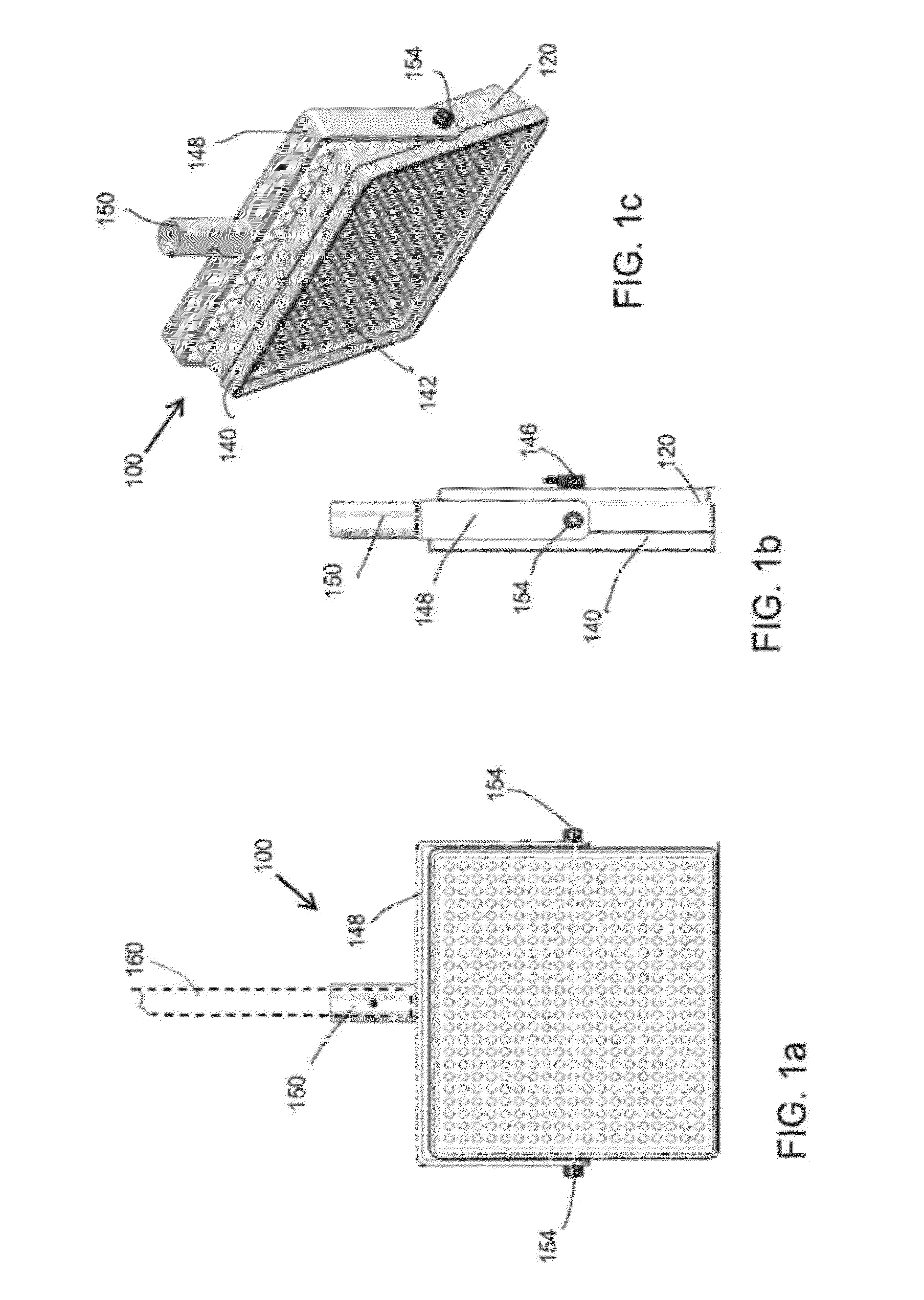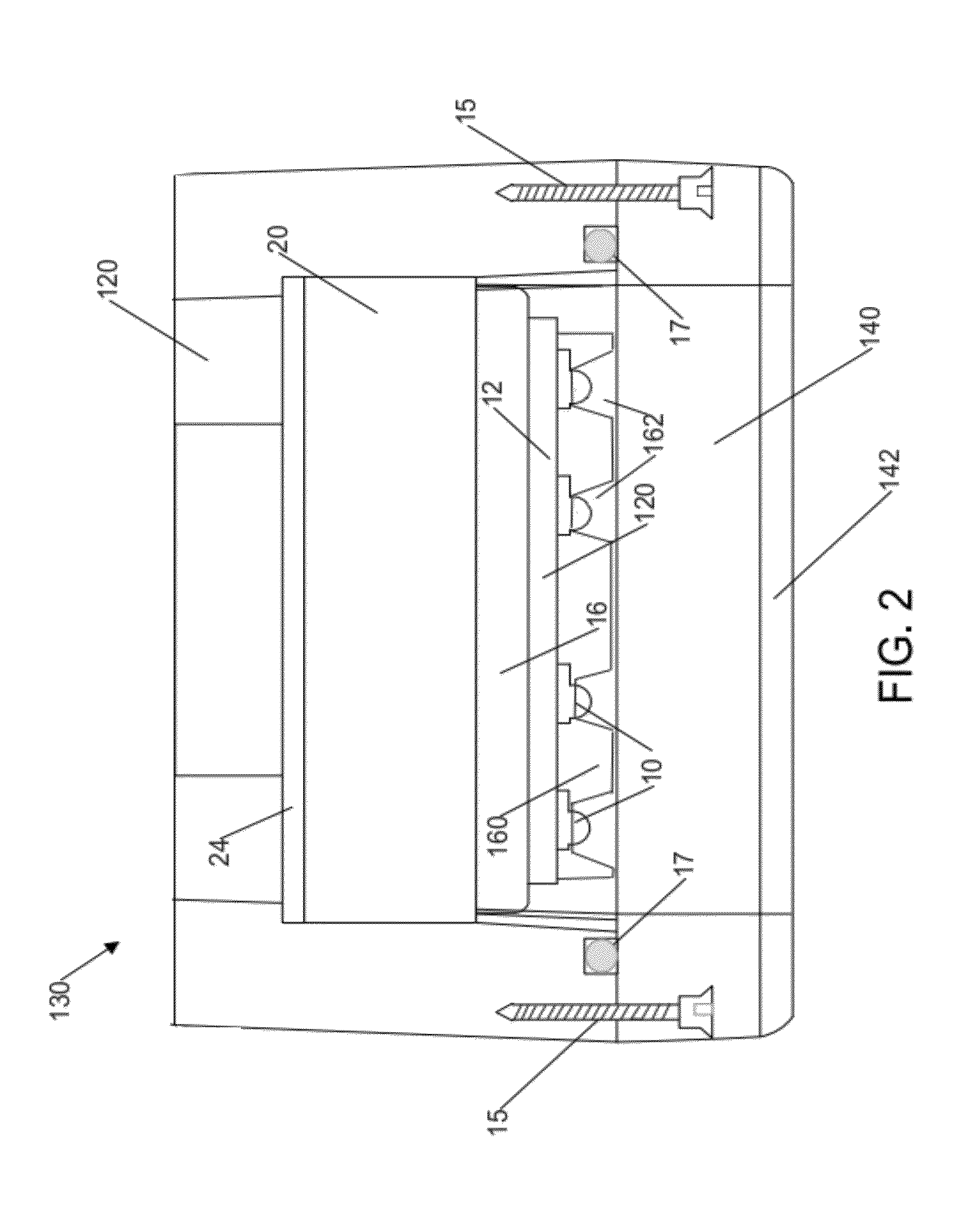Modular lamp for illuminating a hazardous underwater environment
a module lamp and hazardous underwater environment technology, applied in the field of illumination systems, can solve the problems of affecting the safety of maintenance personnel, and consuming a lot of time, and achieve the effects of maximizing the operating life, rapid insertion and removal, and high color temperatur
- Summary
- Abstract
- Description
- Claims
- Application Information
AI Technical Summary
Benefits of technology
Problems solved by technology
Method used
Image
Examples
first embodiment
[0036]Heat sink 20, which abuts the back side of thermal bridge 16, conducts the heat transferred from the packaged LED through the PCB 12 and thermal bridge to the back shell 120 of housing 130. In the first embodiment shown in FIG. 4, the heat sink 20 may include a plurality of ribs 22 extending from its back side (the side opposite the front portion of the module). The spaces between the ribs 22, as well as any spaces between the ribs and the inner surface of the back shell 120, are filled with a high heat transfer potting compound 24. Such compounds are commercially-available from a number of sources, including Durapot™ 810, an alumina based, thermally conductive potting compound and adhesive available from Contronics Corp. (Brooklyn N.Y.).
second embodiment
[0037]In a second embodiment shown in FIG. 5, the heat sink 26 is formed as a solid block, without ribs. A high heat transfer potting compound 24 fills the space between a solid heat sink 24 and the inner surface of back shell 120.
[0038]A reflector array 160 with a plurality of conical or parabolic reflectors 162 is positioned over the front face of the PCB 12. The number of reflectors 162 and their spacing match that of the LED array so that when the reflector array and LED array are aligned, each LED 10 is centered within the bottom opening of its corresponding reflector to maximize the amount of light that is directed through the window.
[0039]The LED lighting system described above can be maintained at its safe operating temperature when the lamp is subjected to water temperatures of 50° C. or lower. When operated within its safe operating temperature, the inventive LED lighting system will achieve an average of 50,000 life hours. The integrated LED lamp provides an output illumi...
PUM
 Login to View More
Login to View More Abstract
Description
Claims
Application Information
 Login to View More
Login to View More - R&D
- Intellectual Property
- Life Sciences
- Materials
- Tech Scout
- Unparalleled Data Quality
- Higher Quality Content
- 60% Fewer Hallucinations
Browse by: Latest US Patents, China's latest patents, Technical Efficacy Thesaurus, Application Domain, Technology Topic, Popular Technical Reports.
© 2025 PatSnap. All rights reserved.Legal|Privacy policy|Modern Slavery Act Transparency Statement|Sitemap|About US| Contact US: help@patsnap.com



